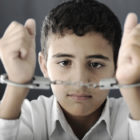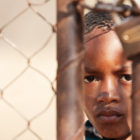
Vermont Adopting Icelandic Program to Curb Substance Use
|
What can youth advocates in rural New England learn about reducing teen drug and alcohol use from a small island nation just below the Arctic Circle?

Juvenile Justice Information Exchange (https://jjie.org/page/59/)

In late September, Torri was driving down the highway with her 11-year-old son Junior in the back seat when her phone started ringing.
It was the Hamilton County Sheriff’s deputy who worked at Junior’s middle school in Chattanooga, Tennessee. Deputy Arthur Richardson asked Torri where she was. She told him she was on the way to a family birthday dinner at LongHorn Steakhouse.
“He said, ‘Is Junior with you?’” Torri recalled.
Earlier that day, Junior had been accused by other students of making a threat against the school. When Torri had come to pick him up, she’d spoken with Richardson and with administrators, who’d told her he was allowed to return to class the next day. The principal had said she would carry out an investigation then. ProPublica and WPLN are using a nickname for Junior and not including Torri’s last name at the family’s request, to prevent him from being identifiable.
When Richardson called her in the car, Torri immediately felt uneasy. He didn’t say much before hanging up, and she thought about turning around to go home. But she kept driving. When they walked into the restaurant, Torri watched as Junior happily greeted his family.
Soon her phone rang again. It was the deputy. He said he was outside in the strip mall’s parking lot and needed to talk to Junior. Torri called Junior’s stepdad, Kevin Boyer, for extra support, putting him on speaker as she went outside to talk to Richardson. She left Junior with the family, wanting to protect her son for as long as she could ...

What can youth advocates in rural New England learn about reducing teen drug and alcohol use from a small island nation just below the Arctic Circle?

As the juvenile justice system has evolved, the use of statistics and data to inform decision-making have become commonplace. Risk assessment in...

Let’s examine this assertion using Johnny as a case study. He is 15 years old and before the juvenile court for battery on a teacher, affray, disrupting public...

Black and Latinx youth in Cook County, Ill. (Chicago) are more likely to go to jail than to go to college. That’s why I have been pondering why our youth are acting in...

The alleged involvement of 13- and 14-year-olds in the senseless murder of a young college student in New York City last month is a heartbreaking reminder that, despite a decade of monumental youth justice reforms, much work remains to help and heal our most troubled children.

It’s pretty to believe that if one only puts in the time, he can save a wayward child. It doesn’t always work out that way. The troubled boy I mentored for 6½ years, through a Norwalk, Conn., school volunteer program, fired me last May.

Florida’s prison system is the third largest in the nation with approximately 95,000 inmates and nearly 164,000 offenders on probation. It’s clear that Florida does a tremendous job of incarceration but we have neglected rehabilitation for far too long. The one question we must ask ourselves when considering how to make long-term improvements to our criminal justice system is, “Are we fostering an environment for Floridians to leave prison better than when they entered?”

On one Thursday in March, James Dobbins was towering over a group of teen boys as they all headed to a community board meeting in the South Bronx.